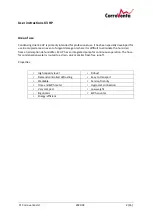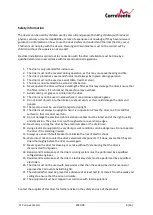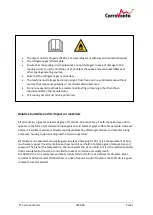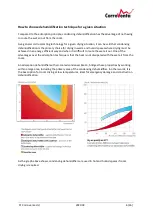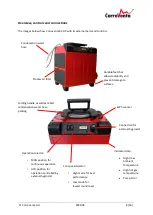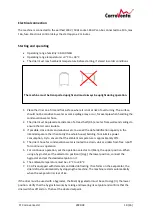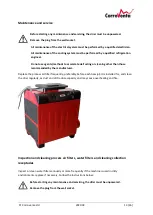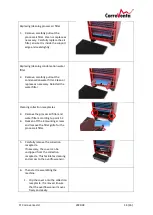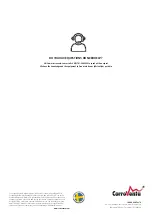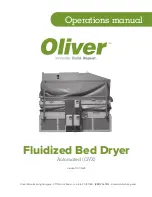
© Corroventa Ltd.
2020.04
5 (16)
Relative humidity and its impact on materials
All air contains a greater or lesser degree of moisture. We cannot see it with the naked eye until it
appears in the form of small water drops against a cold metal or glass surface for example. However,
before it is visible, moisture is already causing problems by affecting materials and manufacturing
processes, causing corrosion and growth of micro-organisms.
Air moisture is measured and usually given in relative humidity (% RH). It is a measurement of how
much water vapour the air contains over how much it can hold in total at a given temperature and
pressure. The higher the temperature, the more water the air can hold, but it is the relative humidity
that is calculated and must be controlled to prevent corrosion or mould growth.
At 100% RH the air is saturated, and the moisture falls in the form of small water droplets. Steel
corrodes at 60% RH and at 70% RH there is a risk of mould. A rule of thumb is that 50% RH is a good
climate for most materials.
•
The dryer contains Propane (R290), a natural refrigerant with low environmental impact.
•
The refrigerant gas is flammable.
•
Ensure that the cooling circuit's pipelines are not damaged. In case of damage to the
cooling circuit, carry the machine out or ventilate the space and avoid naked flames or
other spark-generating sources.
•
Note that the refrigerant gas is odourless.
•
The machine must always be stored upright, frost-free and in a ventilated area without
sources that may cause sparking or near flammable substances.
•
Do not use agents/methods to accelerate defrosting or cleaning other than those
recommended by the manufacturer.
•
The cooling circuit must not be punctured.



